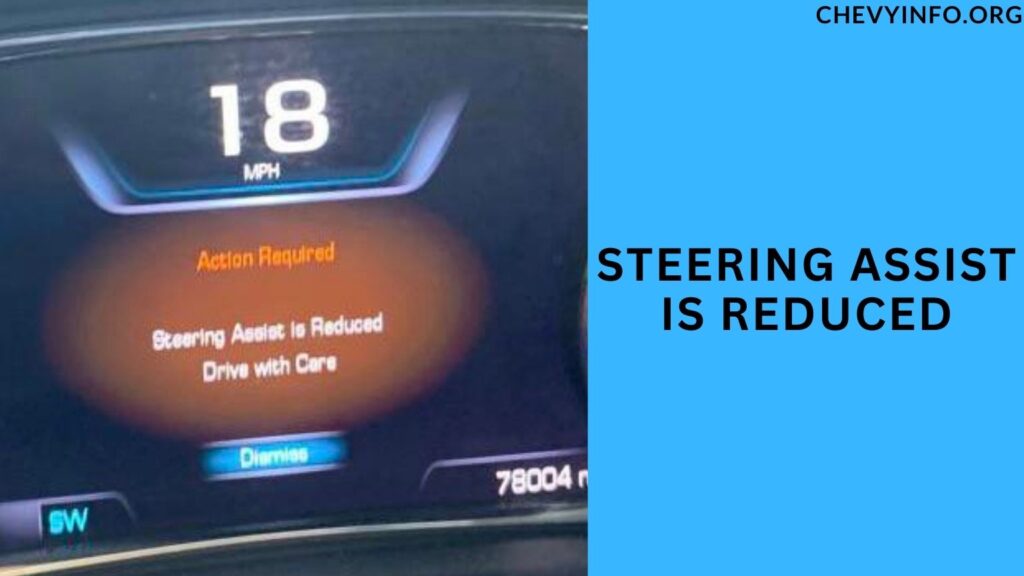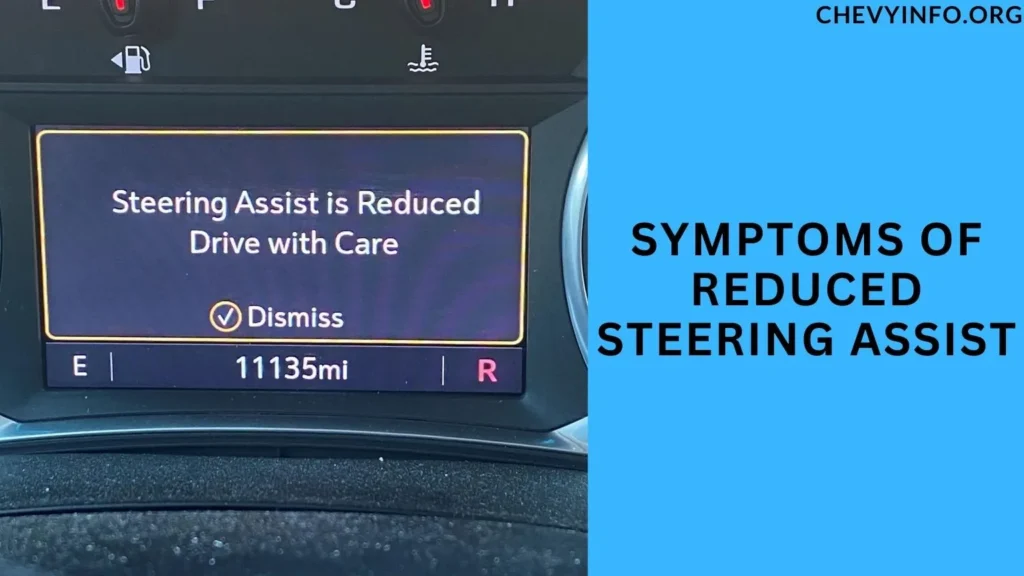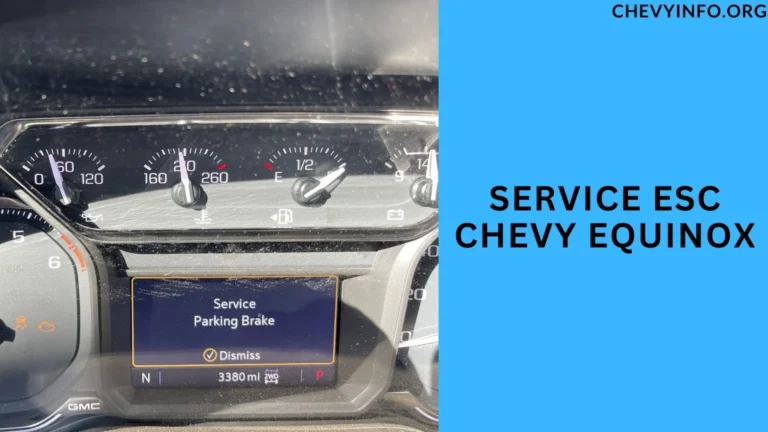Steering Assist Is Reduced (Mean, Causes & Fix) of 2024
Driving a vehicle with reduced steering assist can be both frustrating and dangerous. Steering Assist Is Reduced,
Whether you’re experiencing a heavy steering wheel or difficulty turning, it’s essential to understand the causes and find effective solutions to ensure your safety on the road.

Introduction to Steering Assist Reduction
Steering assist reduction refers to a condition where the power steering system in a vehicle does not function at its optimal level, making steering more challenging for the driver.
This issue can arise due to various mechanical or electrical problems within the steering system.
Causes of Steering Assist Is Reduced
Reduced steering assist in vehicles can stem from various causes, ranging from mechanical issues to electrical problems.
Understanding these causes is crucial for diagnosing and addressing the issue effectively. Below are some common causes of reduced steering assist:
Mechanical Issues
One of the common causes of reduced steering assist is mechanical issues within the steering mechanism. This could include worn-out steering components, such as the steering rack or linkage, which can lead to increased friction and difficulty in steering.
Electrical Problems
In modern vehicles, steering assist is often controlled electronically. Electrical problems, such as a malfunctioning sensor or a faulty control module, can disrupt the power steering system and result in reduced assistance.
Symptoms of Reduced Steering Assist

Recognizing the symptoms of reduced steering assist is crucial for prompt diagnosis and repair:
- Heavy Steering Wheel: You may notice that the steering wheel feels heavier than usual, requiring more effort to turn.
- Difficulty Turning: Turning the steering wheel, especially at low speeds or while parking, becomes challenging.
- Strange Noises: You might hear unusual noises, such as whining or groaning when turning the steering wheel.
Consequences of Ignoring Steering Assist Issues
Ignoring steering assist issues can have serious consequences:
- Safety Risks: Reduced steering assist can compromise vehicle control, increasing the risk of accidents, especially in emergency situations.
- Damage to Vehicle Components: Continued use without addressing the problem can lead to further damage to the steering system and other related components.
How to Diagnose Reduced Steering Assist?
Diagnosing reduced steering assist involves a systematic approach:
- Visual Inspection: Check for leaks, damaged hoses, or loose connections in the power steering system.
- Testing Steering Fluid: Ensure the power steering fluid is at the correct level and free from contaminants.
- Checking Power Steering Pump: Verify the functionality of the power steering pump and its belt for proper operation.
Steps to Fix Reduced Steering Assist
Once the cause is identified, steps to fix reduced steering assist may include:
- Replace Steering Fluid: If the fluid is old or contaminated, flushing and replacing it can improve steering performance.
- Repairing or Replacing Power Steering Pump: Addressing issues with the power steering pump or its components may be necessary.
- Addressing Mechanical or Electrical Problems: Repair or replace worn-out or malfunctioning parts to restore steering assist.
Importance of Regular Maintenance
To prevent steering assist issues, regular maintenance is crucial. This includes checking steering fluid levels, inspecting steering components, and addressing any signs of wear or damage promptly.
People also ask
What does it mean when a car says steering assist is Reduction?
When a car indicates that “steering assist is Reduction,” it means that the power steering system,
which helps ease the effort required to turn the steering wheel, is not functioning at its optimal level.
This can result in heavier steering and increased difficulty in maneuvering the vehicle, especially at lower speeds or during tight turns.
What causes a steering assist fault?
A steering assist fault can be caused by various factors, including low power steering fluid levels, a malfunctioning power steering pump,
Issues with the power steering belt, or electrical problems such as sensor failures or a faulty control module.
These issues can lead to reduced or inconsistent steering assistance, making it more challenging for drivers to steer their vehicles smoothly.
Can I drive my car with a power steering assist fault?
Driving a car with a power steering assist fault is not recommended. It can make steering more difficult, especially at lower speeds or when parking.
Continued driving with this issue can also potentially lead to further damage to the power steering system and other components.
It’s best to have the problem diagnosed and repaired by a qualified mechanic before driving the vehicle again.
How to fix power-assisted steering?
To fix power-assisted steering issues, you can:
Check and refill power steering fluid levels.
Inspect and replace a worn-out power steering belt if necessary.
Test and repair or replace a malfunctioning power steering pump.
Address any electrical problems such as sensor failures or control module issues.
Consult with a professional mechanic for accurate diagnosis and repair.
Conclusion
In conclusion, understanding the causes and solutions for reduced steering assist is essential for vehicle safety and performance.
By diagnosing issues early and taking proactive measures, drivers can ensure smooth and responsive steering on the road.

Henry Worner, a seasoned automotive expert with over 13 years of experience in car repair, maintenance, and performance enhancement, ChevyInfo.org was born out of a passion for Chevrolet vehicles. Henry’s deep-rooted love for everything Chevy has driven him to create a platform where fellow enthusiasts, car owners, and anyone interested in Chevy cars can find valuable insights, tips, and guidance.






